I am in Berlin today. It is 29 years, eleven months and two weeks since the fall of the Berlin Wall. I count myself fortunate to have been there on the day: Ich war dabei, I was there. It was one of the defining moments of my life. But I do have two regrets.
First, I regret I wasn’t able arrange this visit so I could be here in a fortnight to stand in the same spot next to Checkpoint Charlie as I did on Sunday, 12 November 1989.
Second, I regret so much that I didn’t have a camera with me when I visited Berlin all those years ago. My defence is that when I left London I had no idea the Wall was about to fall; I had anticipated a nice quiet weekend with nothing new to photograph.
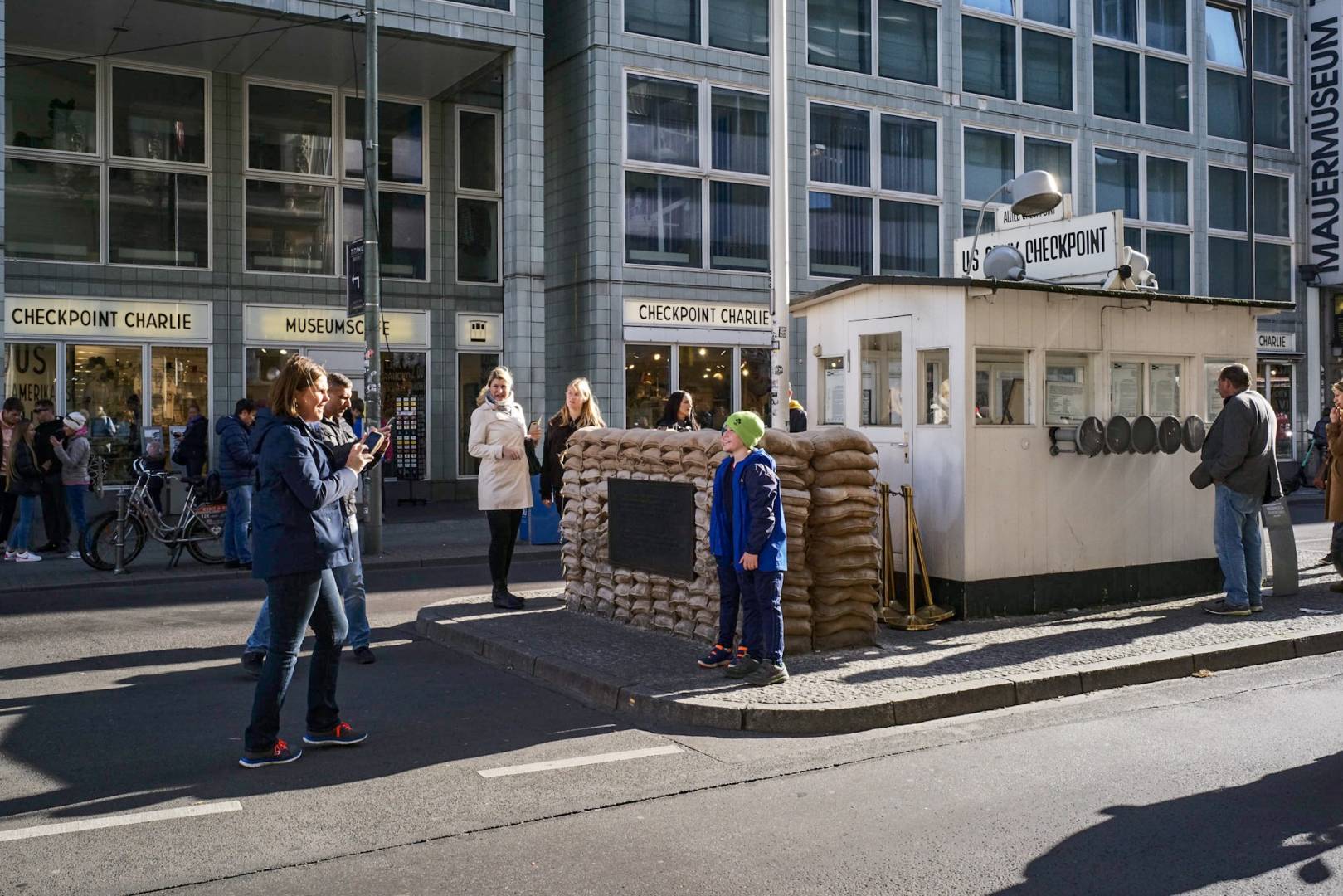
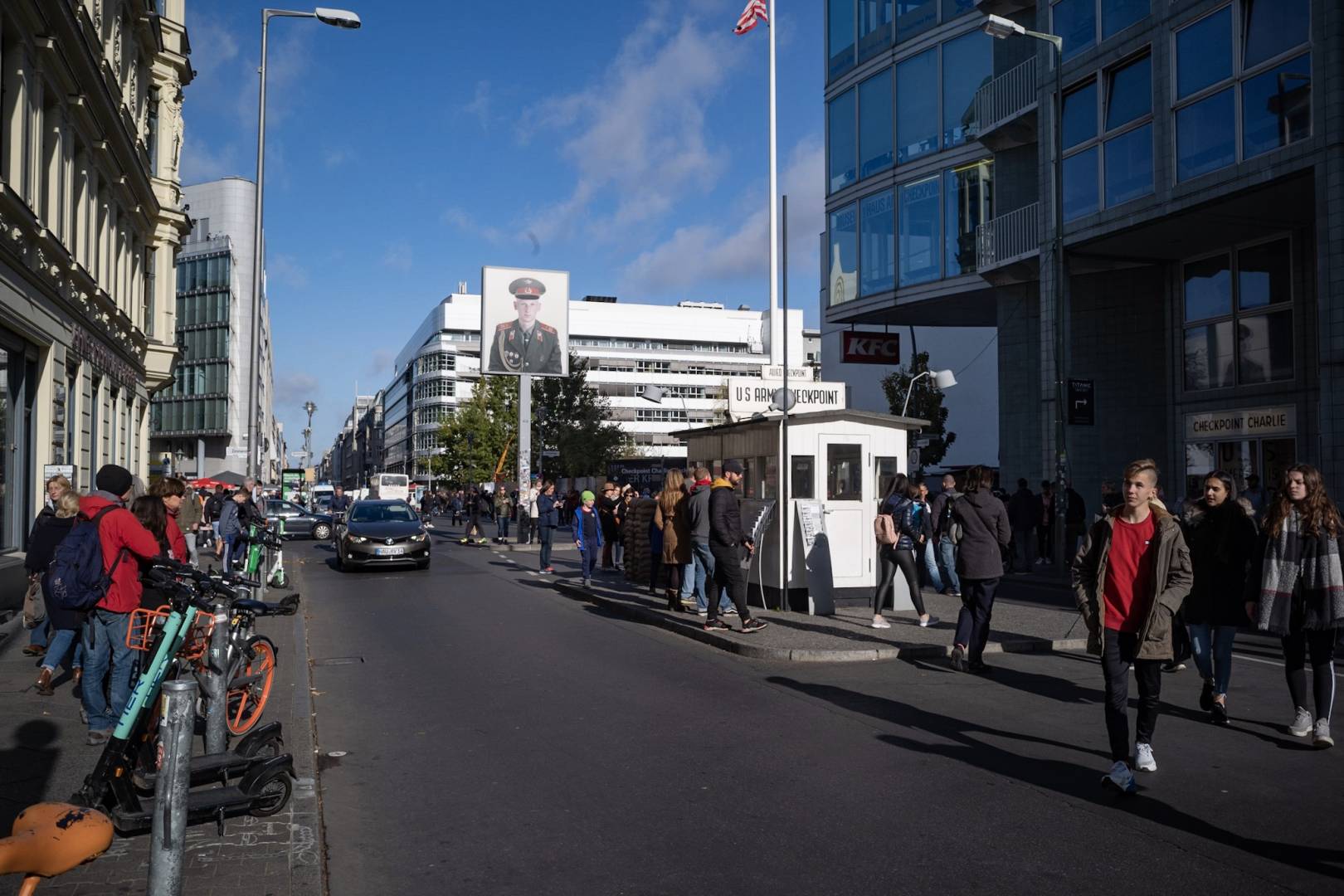
Such a lack of recording an event is almost unthinkable now. At the very least I would use my iPhone and, in any case, I would not now venture out without a camera of some sort, especially when travelling abroad.
It was different in 1989, back in the days of film. I did have cameras, of course, but when I set out for Berlin on that particular occasion I had no idea it would turn out the way it did. I decided not to take a camera to save a bit of weight. In retrospect I should have gone out and bought a camera and a roll of film, but I didn’t. Life is made of such little regrets.
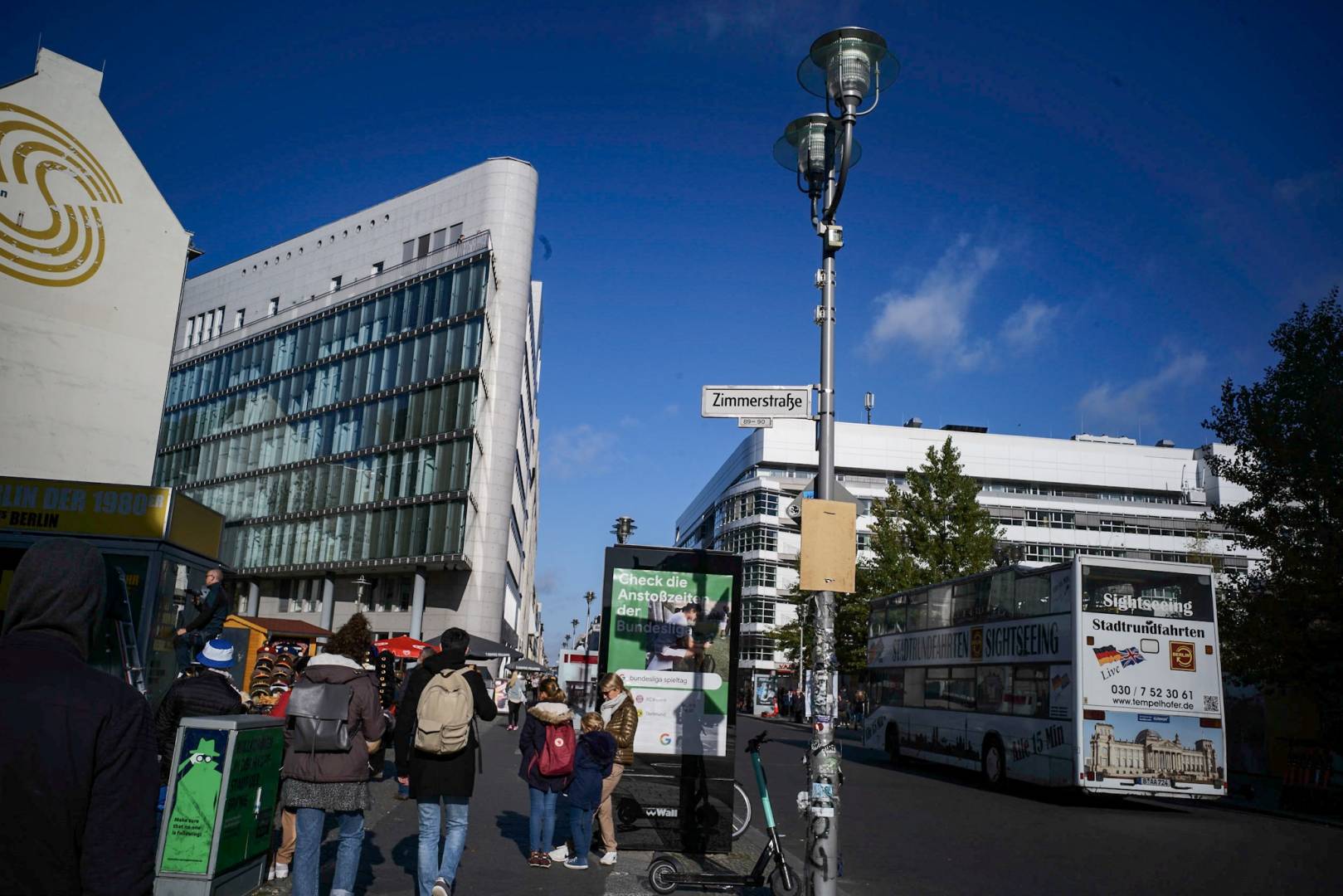
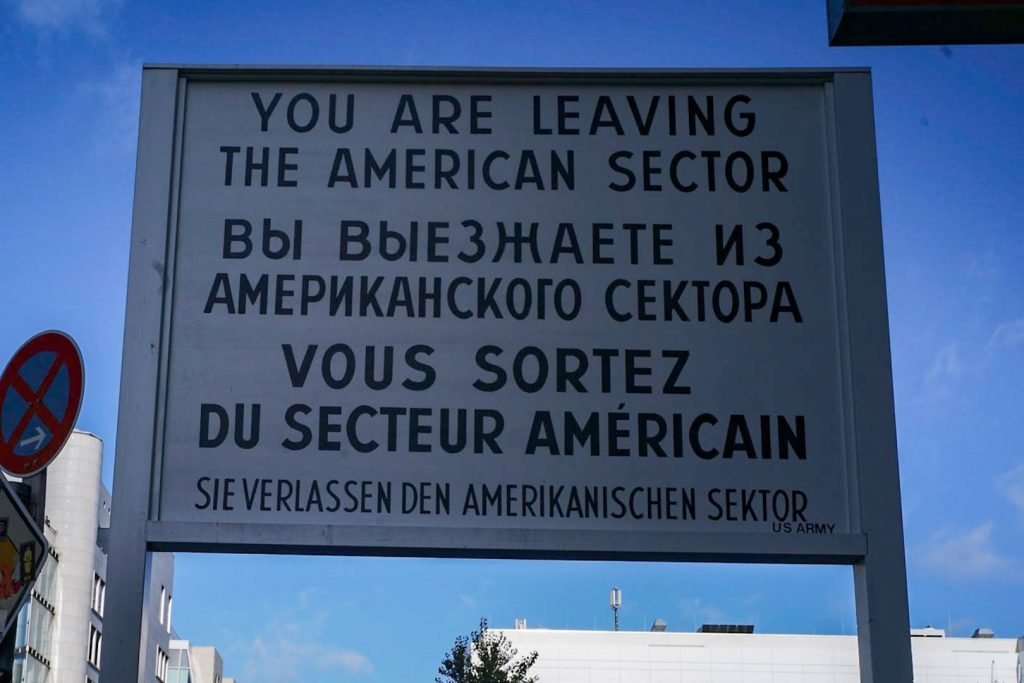
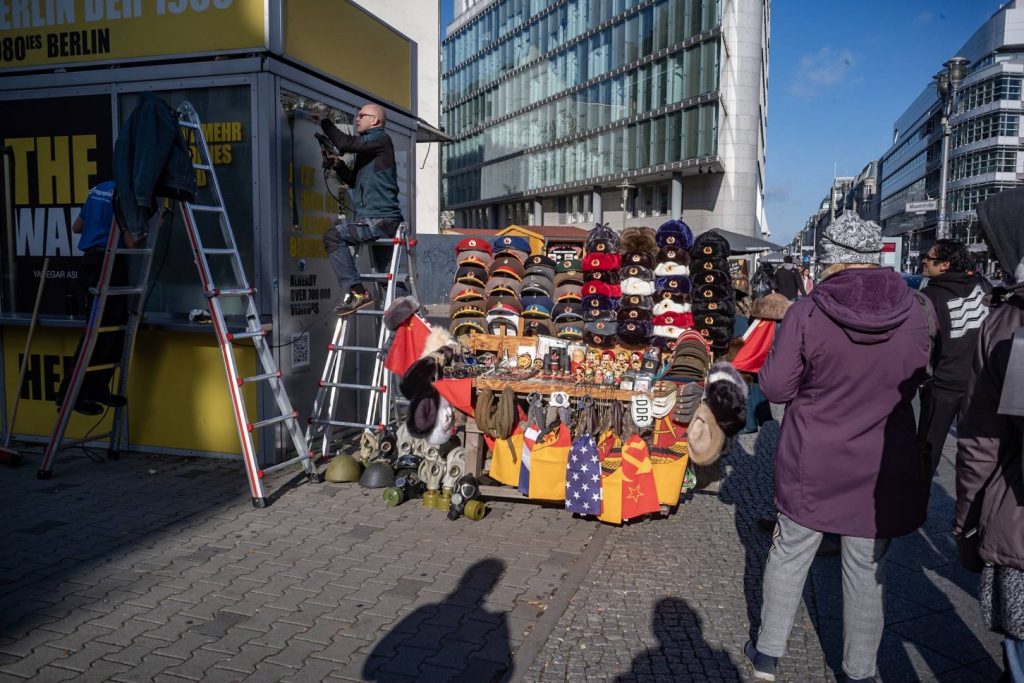
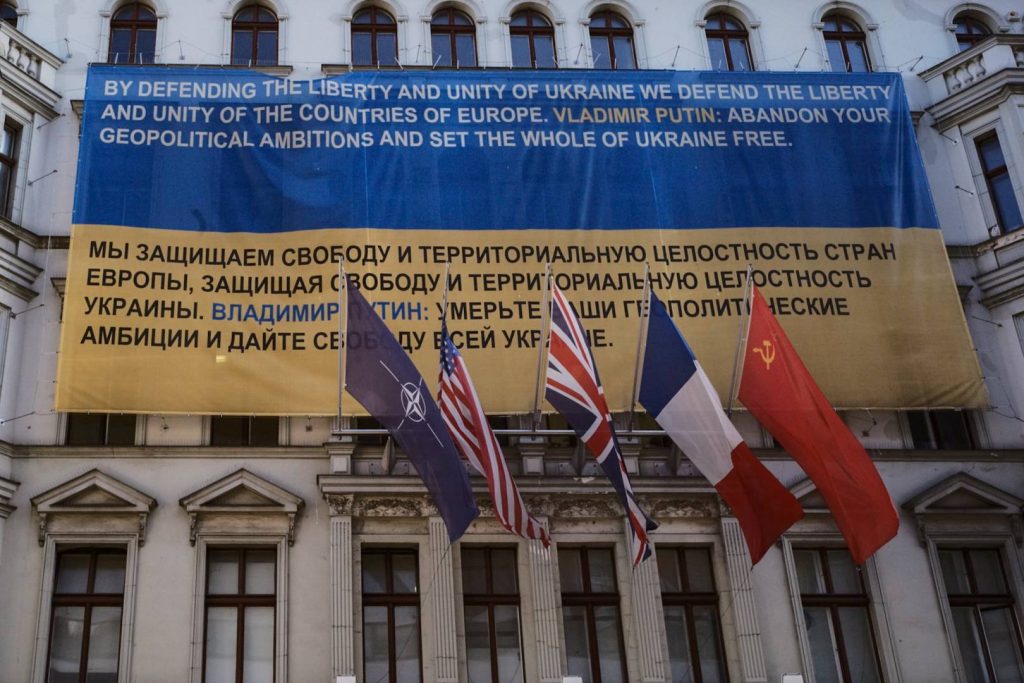
Significant dates
As it happened, 9 November 1989 is one of the most significant dates of the 20th century. It ranks alongside 11 November 1918, 2 September 1939, and 7 December 1941, as dates of major importance in the history of the Europe.
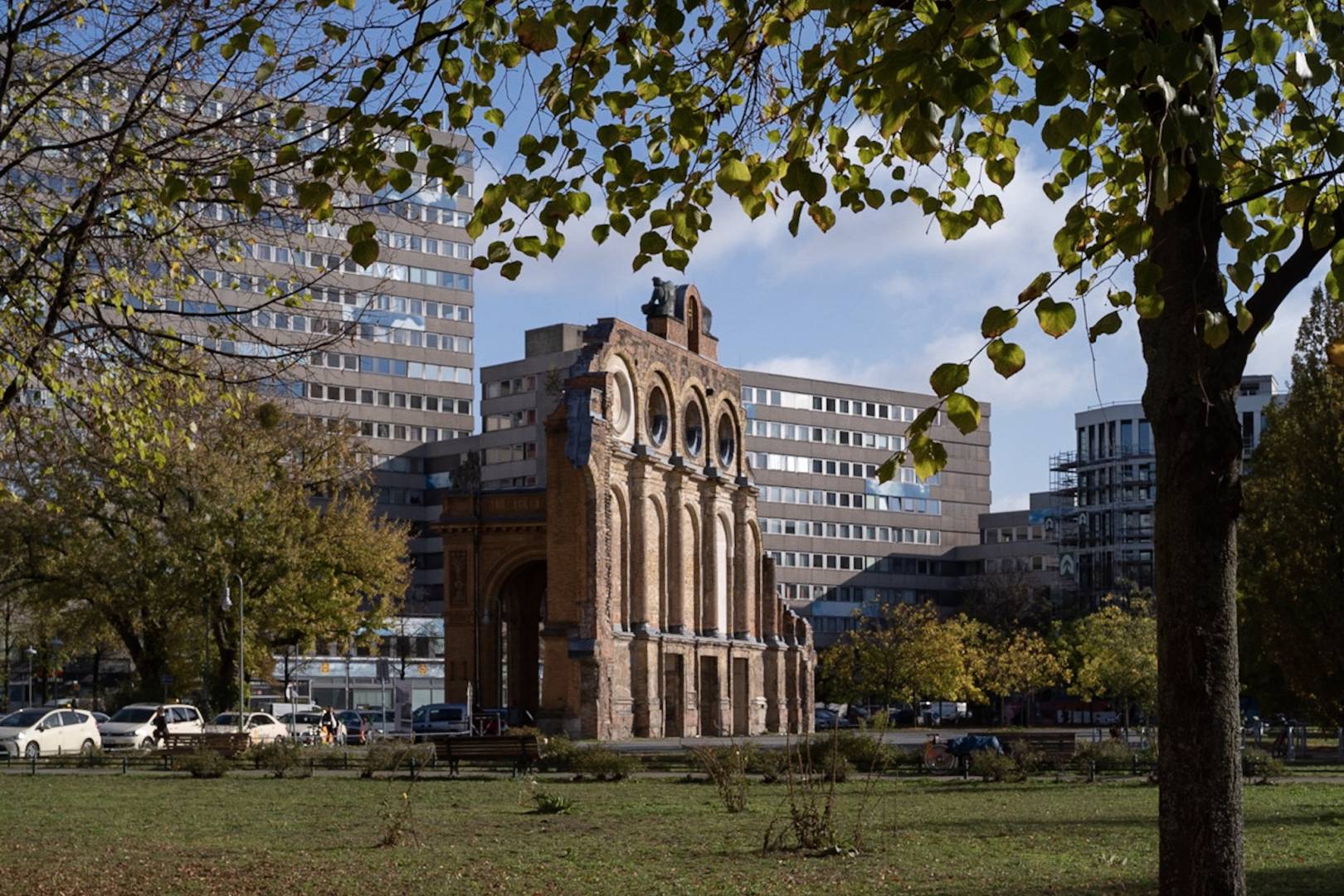
I had been (and still am) a frequent visitor to Berlin. I am involved with a business venture and need to be here every couple of months to keep an eye on things. But my association with Berlin goes back a long way — back nearly sixty years to a time when the Second World War was still fresh in the memory.
I have good friends who still live in the eastern part of Berlin and I visited them diligently throughout the 25 years leading up to the fall of the Wall. We never imagined that the two halves of Berlin would ever be reunited. It seemed impossible right up to the time it happened.
I would drive through Checkpoint Charlie (if I had my car) or get myself to Friedrichstraße station by public transport on so many occasions that I can easily recall the repressive infrastructure of the border arrangements. I can almost smell the dingy wooden hatch as I shoved my passport through for a good stamping.
As I now pass the Tränenpalast museum (Palace of Tears) attached to Friedrichstraße station, I still shudder at the thought of negotiating those guard posts and walking along the dingy corridors to the S-Bahn, en route back to West Berlin and freedom.
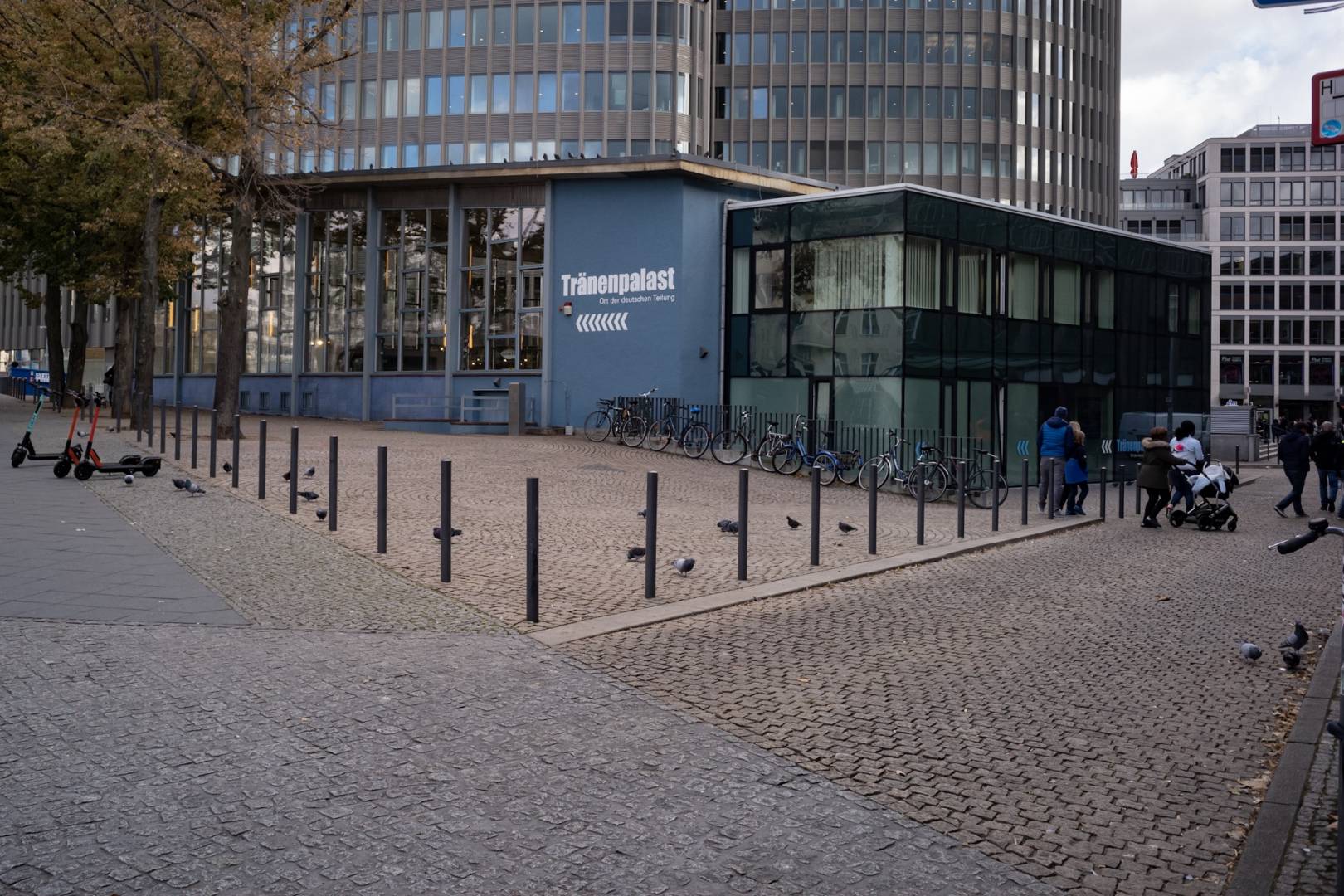

There was always a strong sense of relief as you got on the train and knew that you were safe. Even if you’d done nothing wrong. There was a feeling that you might have infringed some rule or other and you could never be sure until the passport was stamped as you passed through “the palace”.
Imagine what it must have been like for those brave people who managed to flee to the West despite all the gruesome trappings of the border. Most walls in history have been designed to keep people out. This one was the opposite, it kept them in.
You can readily understand why it is now called the “Palace of Tears“. It was where East Germans said their goodbyes to their friends and relations from the West. Such was the horror of the system that only pensioners or trusted business people were allowed to cross from the Hauptstadt der DDR or Capital of the German “Democratic” Republic) to West Berlin.
Pensioners were no longer of any use to the state and they could defect if they wanted to. No more pension to pay. In reality, most came back because they had family.
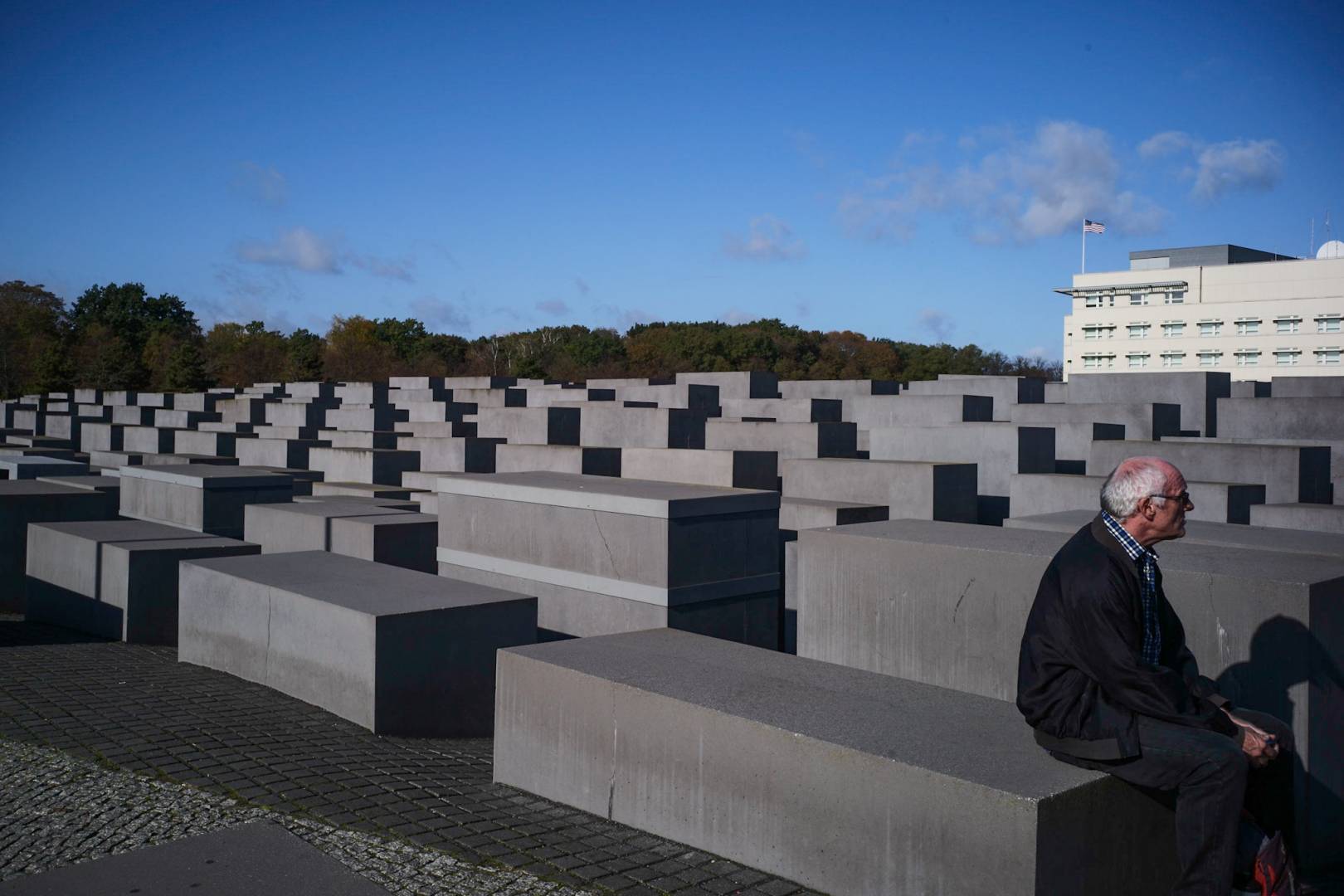
Fruit, chocolate and coffee
As I said, I was a frequent visitor. I would carry bananas, oranges, chocolate and Nescafé instant coffee to my friends. Such delights were virtually unknown in the land of equality where everyone was dragged down to a miserable common level.
Even oranges, which we in the west take for granted, mostly came from socialist Cuba and in such minute quantities as to be a real luxury. I remember they were pretty bruised and battered and very unappetising.
On the streets I would be propositioned to come back the following day with a pair of Levi’s 501 jeans. Cliché it may be, but young people did actually ask for chewing gum. Anything western was looked on with awe.
Such was the difference between East and West that few people who have not experienced it first hand can begin to imagine just how awful the whole thing was. It was a clear delineation between benign capitalism in the west and hard-line socialism in the east.
This type of hard socialism has never succeeded anywhere in the world. And yet its proponents maintain the old mantra that “they didn’t do it properly” and “it will be different next time”. Tell that to the citizens of the “democratic” republic prior to 1989.
Whenever I meet a young person who tells me about the wonders of far-left socialism, I ask if they can imagine what it was like to live in East Germany or, for that matter, anywhere else in the Eastern bloc. Of course they cannot; they do not have a clue. Most of them are well educated and come from a privileged background. Let’s hope they never have to learn the hard way.
Unfortunately, respectable and well-meaning concepts such as “socialism” and “democracy” have been adopted by some of the most repressive regimes in history, putting a whole new meaning on these otherwise positive messages. Even the Nazis started as socialists, it’s in the party title.
Border matters
Over the years, then, I spent quite a lot of time in East Germany. Unlike my friends, I was free to come and go. They had to wait 40 years before they were able to take the train from one half of their own city to the other.
It came to pass, then, that I welcomed them on 11 November 1989 to the apartment where I was then living in Fasanenstraße, off the Kurfürstendamm in the West. It wasn’t exactly a palace-of-tears occasion, but you can be assured that a few tears were indeed shed. They were astonished and tearful at the sight of supermarkets with food, shops with luxury goods and, above all, by the splendour of KaDeWe, the “department store of the west” in Wittenbergplatz.
Like all visitors from East Berlin over that momentous weekend, they duly collected their 100-Mark “Begrussunsgeld”, welcoming money, from the bank. And there was free CocaCola to be had, dispensed from the backs of trucks all over Berlin.
As a result of my visits to the East over so many years, I have a pretty good idea of what it was like to live in the German Democratic Republic. I was never allowed to stay the night in my friends’ apartment. That would have been a bit of “West-Kontakt” too far.
Indeed, whenever I visited their apartment during the day the lace curtains on a nearby flat would twitch as the block warden noted the presence of foreigners. Everyone knew who she was. She was probably the same curtain twitcher who was at work up to 1945. We must all have had an interesting file at Stasi headquarters and one day I plan to try to find it.
Instead of staying with friends, I had to book into the expensive Palast Hotel, one of the few places allowed to foreigners, and where everything had to be paid for in Western money (known as “valuta”). The Communist government maintained the fiction that the East Mark was worth one Deutschmark, however, despite the obvious appetite for valuta.
In reality, on the black market you could get ten DDR marks for one western mark. There was a clear line between what could be paid for in local currency and what required valuta. The local currency would pay for everything you needed but nothing you wanted.
On one occasion, my friends invited me to dinner at the only restaurant in the Palast which was open to DDR citizens and where, in theory, it was possible to pay in DDR marks.
They had booked the table six months before, as was obligatory for locals. I could have just walked in and grabbed a table at any time.
After our meal, my friend got out his wallet to pay. But the waiter sniffed and barked “valuta only.” I had to pay, otherwise we would have been washing dishes. You can image how devastated we all were.
Over the years, too, I built up some vivid memories and I have many anecdotes of how the system worked. I have dined out several times on one particular memory that is still at the front of my mind.
Cinema Astra
One evening in the mid 1970s I was visiting my friends in East Berlin. I was staying at the comfortable Palast Hotel, opposite the Berlin Dom, and had an evening to kill. We decided to see a French film (of no-doubt impeccable socialist credentials) at the Astra cinema, somewhere on the way to Schönefeld Airport. We arrived there in style in my friends’ much-cherished Trabant car.
We came to a halt in a dingy side street to find a sort of corrugated wartime hut (but a large one) with a couple of dim filament bulbs hanging over the entrance sign: Kino Astra. But first we had to park the Trabant, my friends’ pride and joy. It was a Trabant without a reverse gear (nothing wrong with it, it’s just that reverse gear was an extra), so we all got out to push it into the kerbside parking position.
Inside the Kino Astra all was dull, drab and gloomy. We bought “Moskva” (Moscow) ice cream, wrapped messily in brown paper, and studied the only bit of colour in the foyer: It was a large notice bearing the East German state logo in red and the words “Cinema Astra, we are competing for the title of ‘Cinema of the Year 1975‘”. Good luck to them, I thought at the time. Subsequently I realised that Kino Astra was probably well placed for first prize.
Buying a Trabant
Altogether, this outing was a fairly dismal occasion. I don’t remember much about the French film but I can recollect being mightily bored. On the way back to the hotel, my friend told me how he had acquired the Trabant. It was then five years old. Fifteen years before he had ordered it from the state automobile company (just one, Hobson’s choice, no friendly local dealer).

It was the only car available to the general public. The more expensive Wartburg seemed to be the preserve of the Volkspolizei and the Russian Lada was the chariot of choice for Party functionaries. He sent in his specification and then waited. And waited. East Germans were used to waiting. If they ever saw a queue they would join it and buy anything that might be good for a bit of barter.
One day, some ten years later and quite out of the blue, my friend received a postcard advising him that his new car was in a field some way outside Berlin. He was advised to collect it as soon as possible and bring the required payment in cash. Otherwise the wonderful vehicle might go back into the system.
My friend and his wife took the tram out to the open-air car lot and queued for several hours. At the kiosk they were told that the car was beige, not the blue that they’d ordered ten years before, and possessed several unwanted accessories, including fog lamps. it also lacked other features he had asked for, including reverse gear. Take it or leave it, he was told: “If you don’t want it you can join the waiting list again.”
Life, of course, is too short for such shenanigans, so they dutifully opened the weekend bag, paid up and drove home in the new two-stroke Trabant with its papier-mâché “duroplast” body and no reverse gear.
As soon as the Wall fell, my friends traded in the Trabant for a Jaguar.
Accidents happen
One more little anecdote from the mid 1980s (I have many but don’t want to bore you). One day, while I was visiting my friends, they were keen to show me a local newspaper. There was news of a road accident — a car had run into a tram. Nothing special about this, you might think. But it was the first time they had ever read in a newspaper about an accident.
They had also never read about muggings, theft or other such crimes. They just didn’t happen as far as the state media were concerned. Nothing bad ever happened in the DDR. In fairness to East Germany, it was on the face of things a much safer place than modern Western cities. There was little obvious crime and one could walk around without worrying too much. Probably the reason was that there was nothing worth stealing.
But crime did happen. It just wasn’t reported because the government liked to maintain the fiction that all was sweetness and light in their socialist paradise. From 1985, as the ice of the regime began to thaw (just a little), the newspapers started to report road accidents and worse. Citizens were amazed.
Rose tints
Some people in Germany — but not only in Germany, in many countries, and they are usually educated and from privileged background — believe that Communism is some sort of benign panacea for all their perceived ills (such as not being able to afford the latest iPhone or not being able to fly to Australia at whim).
Not one of them is old enough to have lived in the German Democratic Republic or any other socialist paradise for that matter. Otherwise they wouldn’t entertain such foolish notions. The few older people who still revere the old republic are dyed-in-the-wool political extremists. No doubt, they felt more at ease when everyone was held down to their level. They probably all had lace curtains. At least that is my view.
The only people who ever benefitted from the Communist regimes in Eastern Europe were the people who ran their countries, the party faithful — the Parteibonzen (the Party fat cats), as they used to say in Germany. It is exactly the same expression used for the leaders of the National Socialist German Workers’ Party up to 1945.
All pictures In this article (with the exception of the Trabant and world clock from Wiki Commons) were taken yesterday with the Leica M10-D and f/5.6 Summaron lens in zone-focus mode. It was set throughout to f/11 and 2.5m.
This marks my first overseas visit without a MacBook to process images — a new dawn. I had to start from scratch learning Lightroom CC mobile, and a frustrating experience it has been. But we live and we learn.

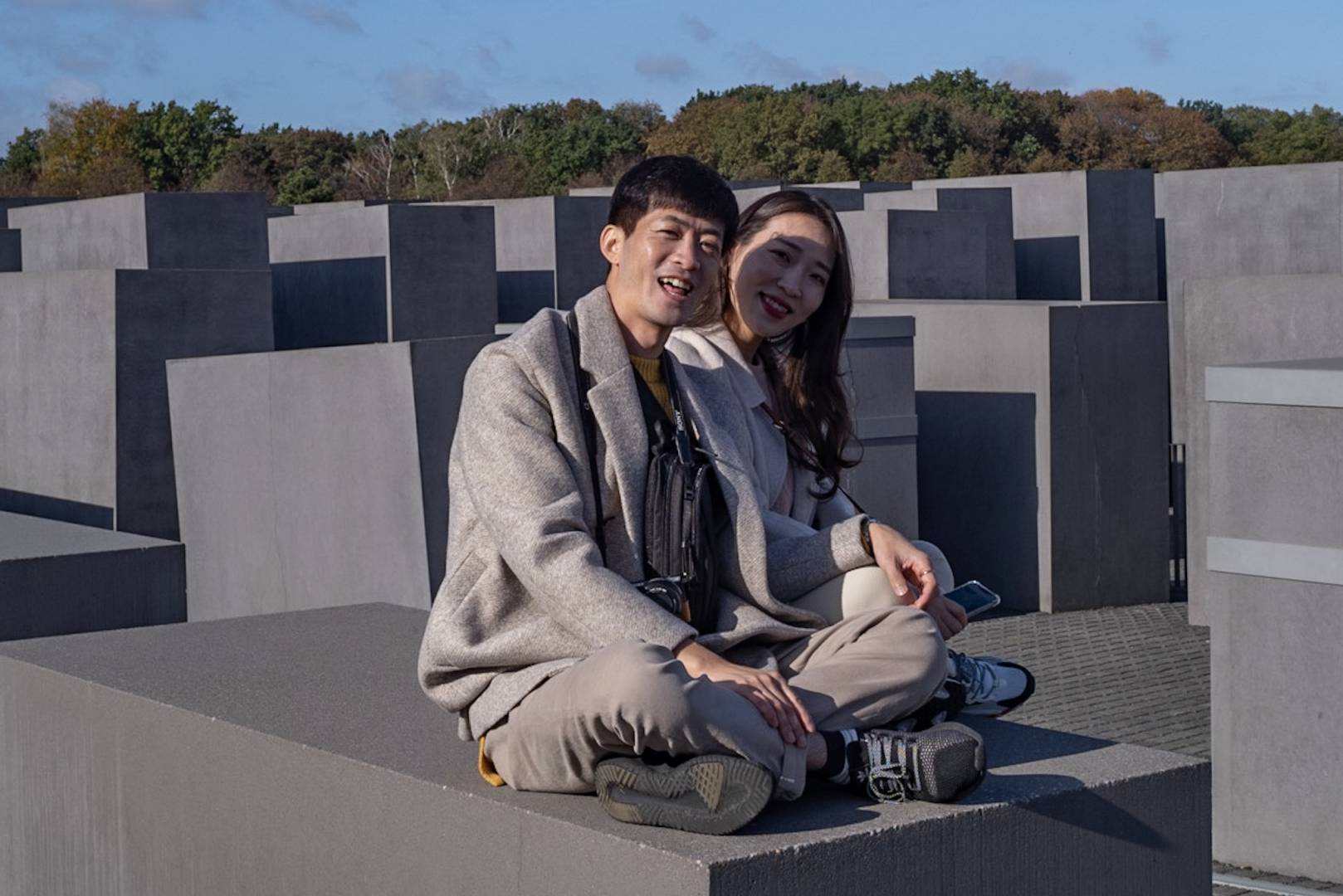
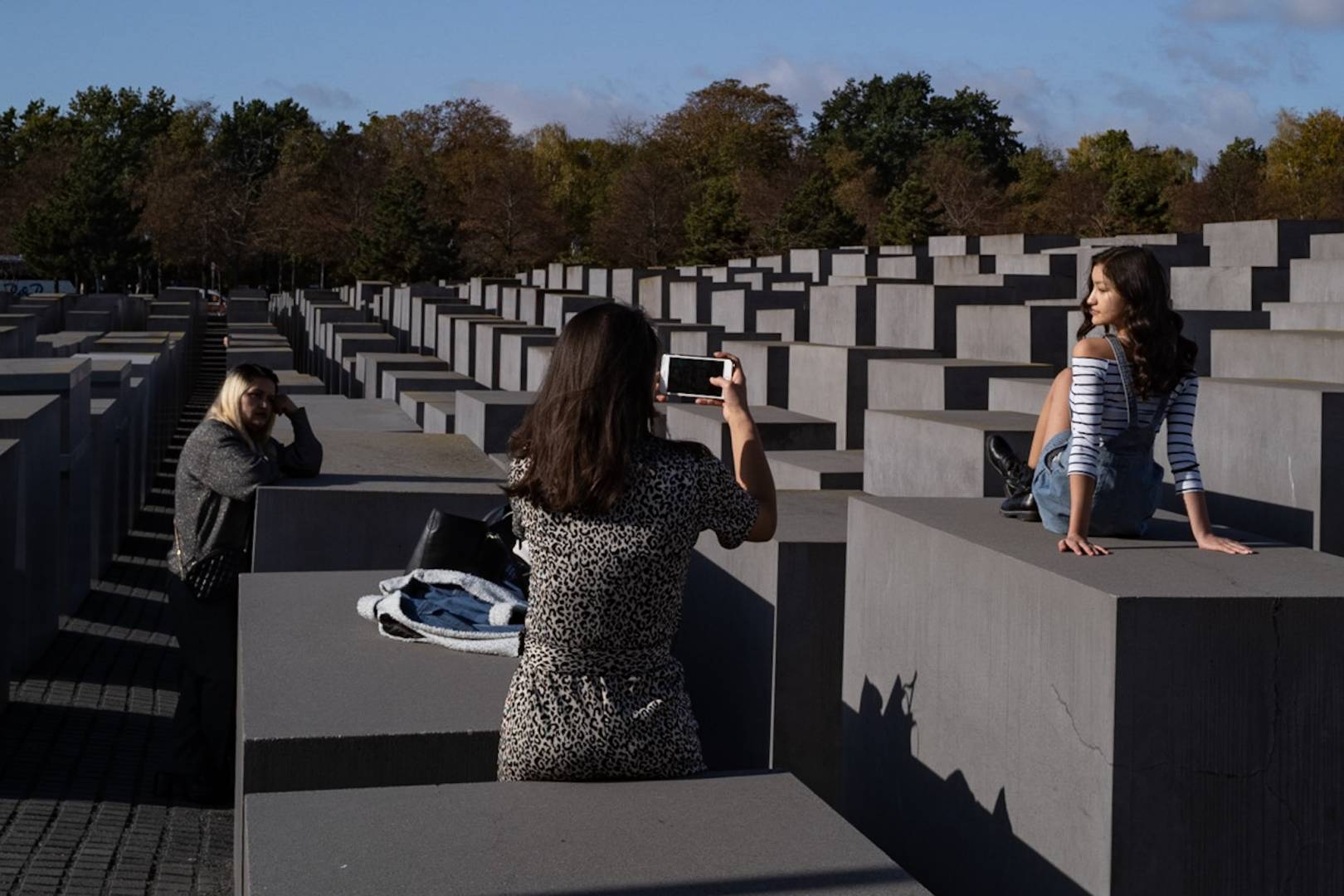
Dear Mike,
Checkpoint Charlie was restricted to foreigners. As far as I know, Germans were not allowed to pass there. They had to use different crossing points like the Mauerstrasse. My aunt was once not allowed to pass there, because by that time she still had German citizenship and my American uncle had to pass at CPP.
Tränenpalast:
I went through the Tränenpalast as a 21 year old young man in April 1985 with my parents and my dog on a one way trip out of East Germany. I can still recall the sequences like a movie in my thoughts. We had to leave almost everything behind and left without any citizenship. I still have that passport. I also had to leave my girlfriend. Fortunately I’m married to her now.
Six weeks after leaving East Germany I found myself in Denver CO.
I went back through the Tränenpalast with my wife and I can assure everyone that it still is in its original way. I had watering eyes for sure.
Socialism:
I don’t get what people think about the “good old times”. The GDR had a command economy which was led by old men. They qualified with their communist party membership for this commando. It was the “Nomenklatura”. They ruled and not the workers. There has never been a single democratic election before the wall came down. It was always faked.
My description of the GDR:
Someone tells you something about politics and he knows that you know he is lying.
You were a powerless peasant.
The economy’s productivity dropped behind the western in the late 70s, early 80s at a rate of at least 50%. East Germany had 450.000 men under weapons at all times. I estimate, they spent about 20-30% of the state’s income for the military sector. That’s unbearable over a longer period of time.
And the nail in that coffin was the 20 billion credit, Franz Josef Strauss organized for the country. He and the banks knew very well that East Germany would never be able to pay it back.
East Germany was simple totally broke in 1989.
A democracy ist probably the worst way of running a state but it’s the only one that works.
Many greetings
Dirk
Wonderful memories of your time in Berlin. I was one of the last Military Police at Checkpoint Charlie. 9 Nov 89 is a day I will never forget! Thanks for sharing
Thank you, Michael. We must have been standing just a few feet apart on the day. It was indeed a day to remember. I will also remember it for the fact that I had forgotten to take a camera and had no way of recording the events. Big mistake. At least in 2024 I could have used my phone, but then it was a camera or nothing.
The TV dramas series Deutschland 83 and Deutschland 86 seem to give a good idea of the DDR mentality.
In the UK they are on the All4 catchup site https://www.channel4.com/programmes/deutschland-86/on-demand/69622-001 etc
Thanks Mike for this enlightening article. Croatia still demonstrates how the old Communist mentalities linger on even now as modern ideas take hold.
Thank you Michael. Good photos and a clear description of what conditions were like “on the ground” in East Germany in a period that is already becoming a bit foggy.
On a lighter(?) note the film “Goodbye Lenin” (2003) is recommended viewing.
So we share a piece of history – I too happened to drive in to Berlin on the night in question, as a young twenty year old. My friends and I drove up route 2, in an old BMW, and returned a day and half later with nothing but a lump of concrete and hangover to show for our adventure. None of us to this day have a great account of the event, other than we want to be there, and feel the atmosphere.
It is the only time I have been to Berlin, as I lived near Iserlohn at the time, and did so until 1992.
I love your anecdotal stories of East Germany, and the cinema sounds fun, and I remember Trabants turning up all over Germany before I left. My eldest daughters first scan was taken in a German hospital, and is probably the best memory Liz and I have of our time out there.
That was a fascinating set of insights into the strange time and place that was the DDR. Personal experiences like yours are so important to record as official versions of the story often omit the gritty but important details. All this leaves me bewildered at the experience of a British friend of mine who had retired in Slovenia and is now leaving, mostly due to Brexit. He tells me that in the last couple of years, many of the locals he interacted with had begun to long for “the old days” because life was so much better then. I can’t think of a better reason to record the memories of what actually was, rather than some rosy picture told by his local acquaintances.
By the way, the camera and lens combo worked a treat as well. Some nice compositions in there.
Yes, Richard. Things can look different to a new generation. The necessities of life were cheap in east Germany. Commendable. But anything extra, things that we take for granted, were unobtainable and, if you could get them, hideously expensive. The elite — members of the Social Unity Party of Germany were the ones who had all the privilege and money. They didn’t have to shop in Centrum, the state department store. All this is lost on the new generation, of course. They pick what they think sounds attractive and ignore the real problems. They are happy to make the same mistakes as their grandparents.
Richard, I forgot to say that there were many good things about the DDR at a social level. The people were kinder and more sociable then we are used to in the west. In some ways this was akin to the “blitz mentality” in England during the war: a common sense of purpose. Everyone joked about the regime, of course. The big boss, Erich Honecker, was universally derided as Hunni. Hunni Honecker. Despite all the difficulties of daily life, the people of east Germany were simpler and more friendly. That, I suspect, has disappeared.
Thank you for your memories of life in the divided Germany.
I visited a research institution in Leipzig-Halle a number of times after the Wall came down. The senior directors were grappling with staff matters where one in four were not actually qualified. They were “observers”.
And the Stasi headquarters in town had morphed into the Tax Office!
Same thing!
Thank you Mike for the “now” photos and the history. Like you, I have a long history with Germany, both West and East, going back to 1957 (if you don’t count bombing raids on Portland, Dorset, where i grew up during the war) when hitch-hiking back to England from Italy I was picked up in Aachen on a Sunday afternoon by a German in a drop-head VW beetle and invited home to coffee and cakes with his family. I count this as the real-life start of my political-ethical education.
As I grew to know the family better, the parents felt able to share their Nazi past with me and their painful revaluation of their youthful commitment in the immediate post-war years. I gained more insight into how such commitment arose and what it took to come to terms with the moral depravity of one’s idol. However, things are never as clear-cut as we should like to believe. As Theodor Heuss said: “Nicht Alles war falsch, sondern das Ganze” – not everything was false/wrong but the whole. When you write in relation to East Germany of “a clear delineation between benign capitalism in the west and hard-line socialism”, I have to say I do not believe life makes such clear delineations. From many visits to East Berlin – I met my wife on the way to Check-point Charlie and got to know her at the start in the long wait to have our daily entry to the East processed ! – I made friends from East Germany and Czechoslovakia and Hungary. We met once a year at Easter for many years (becoming one of the few youth groups with grandchildren!) and corresponded. We exchanged information and views about our respective societies, and what was impressive was the degree to which the eastern Europeans could point out the stupidities and rigidities of their systems while remaining committed to humanising and transforming them from within on the basis of the equality which those systems professed and in practice were frightened of. But this taught us to look with fresh eye at our own discrepancies in the West between ideals and practice. So it was a process of mutual education for which I am deeply grateful. The East Germans who met in churches and marched in Leipzig and elsewhere in 1989 were not seeking the overthrow of socialism as such, but its realisation through participation. In many ways events overtook them and “re-unification” quickly became annexation by the Federal Republic. And, of course there were others who welcomed this short-circuiting of the political process. I’ve gone on too long, and there is sill much more to say, but I felt that as someone with as long-standing and deep a relationship to Germany (both Germanies) as yourself, Mike, I just wanted to fill in some of the middle tones in the picture.
Thanks, John. I understand and perhaps you are right that there wasn’t such a clear delineation. But the fact that those from the west (except Berliners themselves) could travel east while easterners were in effect in a prison means that the DDR lost the moral high ground it might otherwise have used to its advantage. As always, though, there are two sides.
“..“re-unification” quickly became annexation by the Federal Republic..” ..this is presently being revisited in a 30th Anniversary German TV series (on the ZDF channel) about the ‘Treuhand’ ..the agency which took over East German industry (the Trabant and Wartburg car factories, for example) in order to make them profitable, sell them off or close them down ..leaving many in the East unemployed for the first time in their lives.
Germany is getting good at no-holds-barred wide-eyed re-evaluations of their history.
Mike , a very interesting story. Now remind me again. Was it MI5 or MI6 you were working for at the time?
Just call me James.
Good evening Mr Bond.
O M G what a wonderful story, you have preserved history in an article that should be made required reading in history classes! Here in the states we have Democratic presidential candidates that are so far left they are out of the ballpark. Thank you for this lesson.
Splendid article and images, Mike but more than that – a timely reminder of the ever-present dangers of hard-left, Marxist/socialist regimes. The “dictatorship of the proletariat” is supposed to wither away leaving the people in charge of their socialist nirvana. Evidence from East Germany, Russia, China, Albania, Venezuela and others confirms this never happens. Of course, Marxist theoreticians won’t acknowledge the economic misery and murderous policies which their regimes so easily engender. Its all blamed on Marxism not being properly applied so they say lets do it “right” next time. May God preserve us.
When working in West Germany, as it was in 1973-1975, I went up to the East German border in the Harz Mountains not far from Goslar. I still remember the shudder I felt at the high wire fences, the watchtowers and the sentries. Of course they were there to stop poor East Germans getting out not to repel an influx of West Germans!
You are quite right, David. Hard-left policies of extravagant spending (initially to win votes), penal taxation on the rich and the subsequent collapse of the currency is soon followed by a mass exodus of anyone with assets or anyone with half an ounce of get-up-and-go. The next stage is to close the borders to stop anyone from leaving. It’s the same every time but the idiots who propose such policies will never learn. Unfortunately, at the moment in the UK we have an opposition that believes Venezuela is a model of rectitude and good housekeeping. As you say, may God preserve us….
Wonderful storytelling – thank you!
Thank you!
A truly moving article Mike.
Thank you, Jean. It is hard for younger people, brought up in a more benign western climate, to understand what happened in the decades following the Second World War.